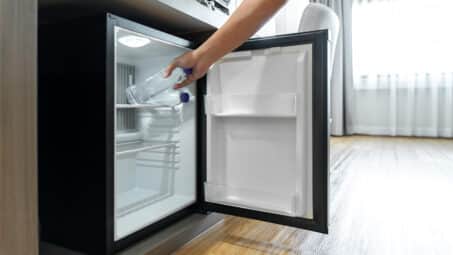A steam dryer is a modern twist on the classic clothes dryer. While traditional models dry your laundry with heated air, steam dryers add a burst of moisture to do more than just dry. They can reduce wrinkles, refresh clothes, and even sanitize.
This upgrade isn’t just for tech lovers. A steam dryer is perfect for busy families, professionals who hate ironing, and energy-conscious folks trying to cut down on wash cycles. If your mornings start with wrinkled shirts or your evenings end with piles of laundry, a steam dryer could make things a bit easier.
How Does a Steam Dryer Work
Steam dryers work like a regular dryer but add steam at certain points during the cycle. That added steam helps soften fabrics, release wrinkles, and kill germs.
Steam Generation: In-Drum Spray vs. Built-In Generator
There are two common methods steam dryers use to make steam:
- In-drum spray: A fine mist of water sprays into the drum, which then heats into steam. This method is simple but depends on how quickly and evenly heat distributes.
- Dedicated steam generator: Some dryers come with a built-in steam unit that produces and injects steam directly.
LG’s TurboSteam system is a good example of a built-in steam generator. Found in models like the LG DLEX6700/b steam dryer, this technology delivers fast wrinkle release for those last-minute outfit emergencies.
Maytag takes a more classic route with the Maytag MED7230HW. This steam dryer sprays a fine mist inside the drum, letting the heat convert it into steam to smooth clothes as they tumble.
Water Hookup or Reservoir Setup
To generate steam, your dryer needs water. Most models come with a kit that includes a small hose and a “Y” connector. This is so you can split your washer’s cold water line and feed both appliances from the same tap.
For instance, the Electrolux Front Load With Perfect Steam supports the common “Y” connector setup. And luckily, it includes a hookup kit in the box, making installation straightforward. Some dryers use a refillable reservoir instead, but that’s more common in ventless or compact models.
Choosing the Right Steam Dryer
Steam dryers come in a few different configurations. Each one varies in how it’s powered, how it’s installed, and how much energy it uses.
Electric Steam Dryer
Electric steam dryers are the most widely available and easiest to install if you already have a 240-volt outlet. They require a standard exhaust vent and usually connect to the same water source as your washer using a splitter. These models are typically less expensive upfront than gas options and offer a broad range of features and sizes.
Gas Steam Dryer
Gas-powered steam dryers use natural gas or propane to generate heat. This makes them more efficient and often faster than electric dryers. They do cost more to buy and install since you need a gas hookup. However, the lower energy cost over time can make up for the initial investment, especially for homes that do a lot of laundry.
Ventless & Heat Pump Steam Dryer
A newer and rarer category, ventless heat pump steam dryers are electric only and use a closed-loop system that recycles heat. They’re energy-efficient but more expensive and slower to dry.
LG’s DLHC5502B is an example of this kind of steam dryer. It’s compact, highly efficient, and ideal for homes without an external vent. Meanwhile, drawbacks include a higher price tag and longer steam cycles.
Steam vs. Regular Dryers
Both steam and regular dryers handle the basic job of drying clothes. The difference comes down to extras, like fabric care, refresh options, and upfront costs.
Steam dryers offer added features that improve convenience and garment care, while regular models focus on straightforward drying at a lower price.
Feature & Cost Comparison
Steam dryers do everything a regular dryer does but add functions like wrinkle reduction, odor refresh, and sanitizing cycles. Many also include upgraded controls, smart connectivity, and more drying options.
These added features can make laundry easier, especially if you deal with dress clothes, workout gear, or items that you wear more than once between washes.
That said, a steam dryer will usually cost more. You’re paying not just for the steam system but often for other built-in tech. Regular dryers stick to the basics and typically offer a better price if you’re just looking for dry clothes without the extras.
Who Benefits Most?
A steam dryer makes the most sense for households that:
- Deal with frequent wrinkles or hang-dry less often.
- Have allergies, pets, or young kids and want sanitize options.
- Want the ability to refresh lightly worn clothes without washing.
If you handle lots of laundry or like your clothes looking crisp right out of the dryer, the added cost can be worth it. On the other hand, if your needs are simple and budget matters most, a non-steam model will still do the job well.
Key Benefits of a Steam Dryer
A steam dryer brings more to the table than just drying clothes. They have practical features that help you save time, keep your fabrics looking better, and help you avoid extra steps like ironing or rewashing. Whether you’re handling everyday laundry or trying to extend the life of your favorite outfit, steam features add extra flexibility and convenience.
Wrinkle Reduction & Less Ironing
Steam dryers shine when it comes to smoothing out wrinkles. By relaxing fabric fibers mid-cycle, they help clothes come out looking pressed without needing to touch an iron.
The Samsung 7.5 cu. ft. Gas Dryer with Steam Sanitize+ includes a steam refresh option that keeps clothes tumbling with intermittent steam bursts, so they stay wrinkle-free even if you forget to unload them right away. This is especially helpful for dress shirts, slacks, or any garment that tends to crease easily.
Odor Removal & Quick Garment Refresh
A steam dryer can freshen lightly worn clothes without sending them through another wash. That means less wear on fabrics, fewer wash loads, and faster turnaround between wears.
The GE GFD65ESSNWW uses PowerSteam to deodorize garments like jackets, uniforms, or gym clothes. It’s a handy way to give your clothes a clean scent without detergent, saving water and time when you just need a refresh.
Steam-Sanitize Cycles for Germs & Allergens
Many steam dryers include a sanitize cycle that combines high heat with steam to neutralize bacteria, pollen, and other allergens. This can be especially helpful in households with kids, pets, or allergy sensitivities.
The Samsung 7.4 cu. ft. Smart ELECTRIC Dryer with Steam Sanitize+ features a Steam Sanitize+ setting certified to eliminate up to 95% of common allergens and bacteria. This extra layer of protection is great for pillows, bedding, and clothes you don’t wash as often.
Static Cling Reduction & Gentler Drying
Because steam adds moisture late in the cycle, it helps prevent over-drying, which can lead to stiff fabrics and static buildup.
The Maytag MED6500MBK Pet Pro is built for pet owners and uses steam to reduce static and clingy pet hair, all while treating items gently. You’ll notice softer clothes, less shock when folding, and fewer items stuck together.
Time & Energy Savings with Steam Refresh
Instead of running a full wash and dry just to freshen up a shirt, a short steam refresh can get it ready to wear in minutes. This saves on water, detergent, and electricity while getting you out the door faster. The LG DLEX4000W includes TurboSteam, which can de-wrinkle and refresh a single item or small load in about 10 minutes. This makes last-minute changes or travel prep a bit easier.
Main Drawbacks
While steam dryers offer useful perks, they do come with a few trade-offs. Price, installation, and maintenance are the most common concerns. Here’s what to keep in mind before you commit:
Higher Price Compared to Non-Steam Models
Steam features tend to come on mid- to high-end dryers, which raises the upfront cost. Basic dryers without steam are generally more affordable, while models with steam often include other upgrades like smart controls, moisture sensors, or extra cycle options that drive up the price. For shoppers on a budget, the added cost can be a deciding factor.
Extra Setup & Water Hookup Required
To use the steam function, these dryers need access to a water source. Most connect using a “Y” hose adapter that shares your washer’s cold water line, and the hookup process is usually straightforward.
Still, it can be a hassle if your laundry space isn’t already equipped or if your washer and dryer aren’t located close together. Small laundry rooms or older homes may need a little reworking if you want to add a steam dryer.
More Components Mean More Maintenance
Steam systems add extra parts that don’t exist in standard dryers, such as spray nozzles, valves, and tubing. These components can collect mineral buildup over time, especially in homes with hard water.
You may need occasional cleaning or part replacement to keep the steam function working properly. While this maintenance isn’t too time-consuming, it is an extra step you need to take compared to basic models.
Learning Curve for Settings
Steam dryers often come with digital controls, custom cycles, and smart features that can feel overwhelming at first. If you’re used to simple knobs and basic presets, navigating menus and choosing the right steam options might take some getting used to. It’s worth spending a little time with the manual to get the most out of the features.
Is a Steam Dryer Worth It?
Steam dryers go beyond basic drying by adding fabric care and time-saving features that make laundry feel less like a chore. With options to reduce wrinkles, freshen clothes between washes, and sanitize when needed, they’re a solid upgrade for many households.
Before choosing one, think through your priorities, whether it’s speed, convenience, fabric care, or budget. Make sure your space supports the dryer type you need, including power source and water access. If you’ve checked those boxes, a steam dryer could be a smart addition that fits your routine and makes laundry a little easier.





